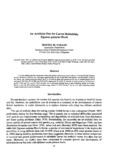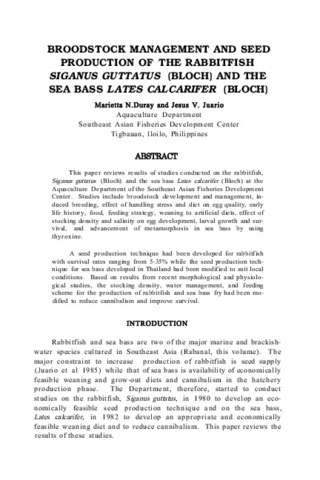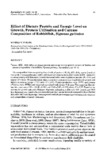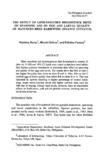An artificial diet for larval rabbitfish Siganus guttatus Bloch.
Share
Abstract
A 21-day feeding trial was conducted to determine growth, survival and metamorphosis of larval rabbitfish (Siganus guttatus ) fed artificial diets containing approximately 40, 45, 50 and 55% crude protein. Artemia nauplii served as the control feed. Larvae performed equally well on all artificial diets with specific growth rate, % metamorphosis and % survival of 7.80-8.35, 95.2-97.9% and 59.9-70.3%, respectively. In contrast, Artemia -fed larvae exhibited poor growth (5.03) and low survival (51%) possibly due to inadequate feeding level or poor nutritional quality of Artemia . Hence, a diet with 40% protein and estimated energy content of 3,971 kcal kg super(-1) may be used with satisfactory results during hatchery production of rabbitfish.
Subject
Collections
Related items
Showing items related by title, author, creator and subject.
-
Broodstock management and seed production of the rabbitfish Siganus guttatus (Bloch) and the sea bass Lates calcarifer (Bloch)
Duray, Marietta N.; Juario, Jesus V. (Aquaculture Department, Southeast Asian Fisheries Development Center, 1988)This paper reviews results of studies conducted on the rabbitfish, Siganus guttatus (Bloch) and the sea bass Lates calcarifer (Bloch) at the Aquaculture Department of the Southeast Asian Fisheries Development Center. Studies ... -
Effect of dietary protein and energy level on growth, protein utilization and carcass composition of rabbitfish, Siganus guttatus
Parazo, Monina M. (Elsevier, 1990)Six semipurified diets comprising three levels of protein (25, 35, 45% of dry matter) each at two levels of estimated energy (3161, 3832 kcal/kg) were fed to fry for 8 weeks in 250-l tanks at a stocking density of 80 ... -
The effect of lipid-enriched broodstock diets on spawning and on egg and larval quality of hatchery-bred rabbitfish (Siganus guttatus)
Duray, Marietta; Kohno, Hiroshi; Pascual, Felicitas (San Carlos Publications, University of San Carlos, 1994)Three isocaloric and isonitrogenous diets formulated to contain 12 (diet A), 15 (B) and 18% (C) lipids were tested on hatchery-bred rabbitfish Siganus guttatus broodstock to determine their effect on spawning and quality ...




